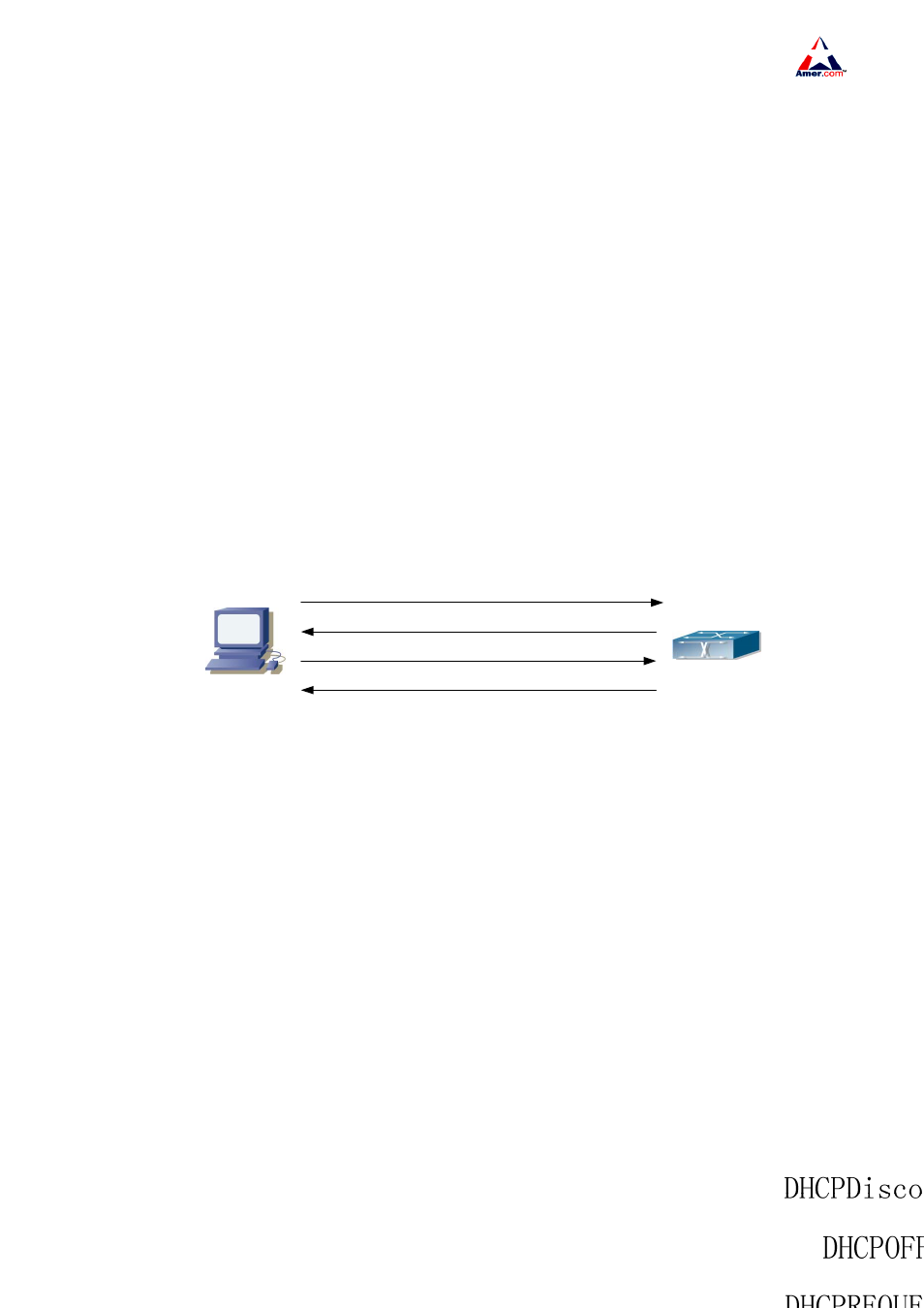Chapter 18 dhcp configuration, 1 introduction to dhcp – Amer Networks SS2R48G4i V2 User Manual
Page 167

SS2R24G4i/SS2R48G4i
156
Chapter 18 DHCP Configuration
18.1 Introduction to DHCP
DHCP [RFC2131] is the acronym for Dynamic Host Configuration Protocol. It is a protocol that
assigns IP address dynamically from the address pool as well as other network configuration
parameters such as default gateway, DNS server, and default route and host image file position within
the network. DHCP is the enhanced version of BootP. It is a mainstream technology that can not only
provide boot information for diskless workstations, but can also release the administrators from manual
recording of IP allocation and reduce user effort and cost on configuration. Anther benefit of DHCP is it
can partially ease the pressure on IP demands, when the user of an IP leaves the network that IP can
be assigned to another user.
DHCP is a client-server protocol, the DHCP client requests the network address and configuration
parameters from the DHCP server; the server provides the network address and configuration
parameters for the clients; if DHCP server and clients are located in different subnets, DHCP relay is
required for DHCP packets to be transferred between the DHCP client and DHCP server. The
implementation of DHCP is shown below
Fig 18-1 DHCP protocol interaction
Explanation
1. DHCP
client
broadcasts DHCPDISCOVER packets in the local subnet.
2. On receiving the DHCPDISCOVER packet, DHCP server sends a DHCPOFFER packet along with
IP address and other network parameters to the DHCP client.
3. DHCP client broadcast DHCPREQUEST packet with the information for the DHCP server it
selected after selecting from the DHCPOFFER packets.
4. The DHCP server selected by the client sends a DHCPACK packet and the client gets an IP
address and other network configuration parameters.
The above four steps finish a Dynamic host configuration assignment process. However, if the DHCP
server and the DHCP client are not in the same network, the server will not receive the DHCP
broadcast packets sent by the client, therefore no DHCP packets will be sent to the client by the server.
In this case, a DHCP relay is required to forward such DHCP packets so that the DHCP packets
exchange can be completed between the DHCP client and server.
SS2R24/48G4i switch switch can act as both a DHCP server and a DHCP relay. DHCP server
